
This article was updated on January 16th, 2024
As a veterinarian, I frequently receive inquiries from owners who are worried that their dog’s poop looks unusual – sometimes with white spots in it. This can be unsettling for owners, because white spots can be a sign that a dog has been infected with worms. However, there could be several reasons. In this article, we will look at the 6 most likely causes – with pictures.
Six most likely causes of white spots or specks in dog’s poop
Possible causes of white specks in the dog’s stool include:
· Worms
The most classic cause of white segments in the stool is tapeworm. These segments can also be seen on the fur around the anus. In many dogs with tapeworm, it is fleas that have transmitted the infestation to them((https://link.springer.com/article/10.1007/s12639-015-0706-9)). Other worms such as roundworm can be visible in the stool, but look more like strands of white spaghetti rather than specks or spots.
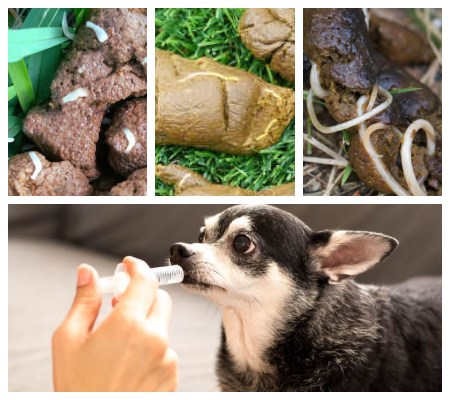
Worms are treated with a de-wormer that can be issued by a vet and it is sensible to have dogs routinely de-wormed. Dogs with fleas need to receive flea treatment and the home must also be deep cleaned. I advise my clients de-worm their adult dogs every 3-6 months. Raw fed dogs and hunting dogs need more regular treatment.
White worms most often found in dog’s stools include roundworms, tapeworms and whipworms. When you see white spots in your dog’s poop, whipworms or tapeworms are the two most likely causes. Here is a picture comparing the two. View more pictures of worms in dog stools and learn about worm treatments.
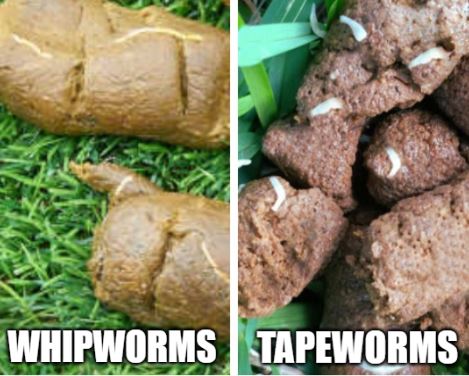
· Fly larvae
It is possible that flies have laid eggs on the dog’s feces if they have been left outside for an extended period of time and you have only now spotted tiny white spots in it. It can take about half a day for eggs to hatch into larvae. This is more common in warm weather. In this case, the stool will not contain white specks when it is first passed by the dog. This poses no risk to your pet.
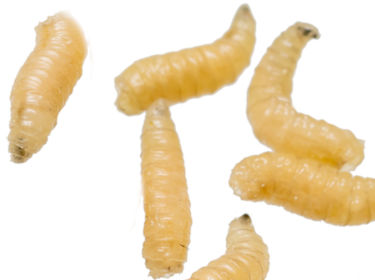
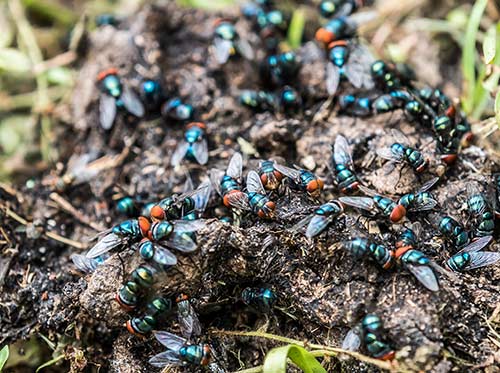
· Food Indigestion
If food moves too quickly through the gastrointestinal tract, it may not digest as it should and we can find pieces of undigested food. Foods like shredded chicken, rice and other grains can look like white specks. When a dog has diarrhea, seeing undigested food is more common. Treating the diarrhea generally resolves the issue. This can include a short course of probiotics and a few days of a highly digestible diet.
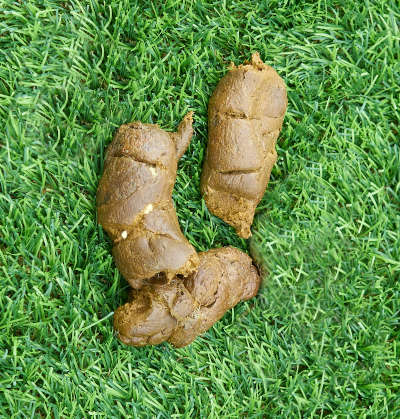
· Medication
Certain medications can affect a dog’s stool and may alter the color. One good example of this is when we use a contrast such as Barium when taking abdominal x-rays and this white dye is then passed in the stool. This can be detected as white specks or splotches. We can see this normal discoloration for a few days after the procedure. It is a normal and expected side effect.
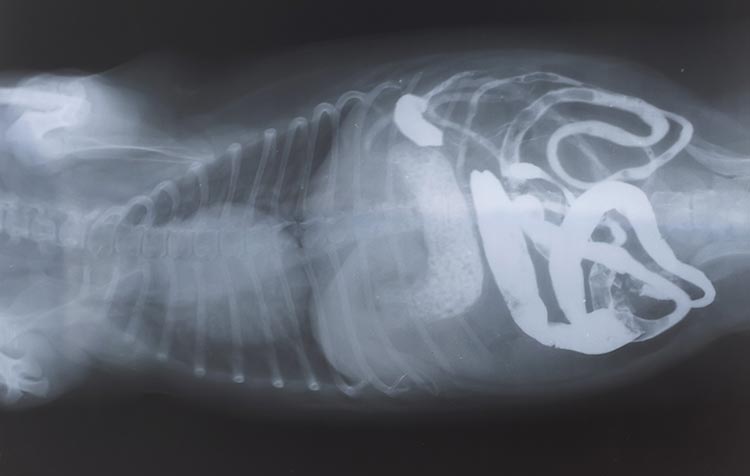
· Foreign Objects
Of course, if your dog manages to eat something they should not such as a stuffed toy or cotton wool we may see some white specks or strands in their stool. Dogs cannot digest everything and certain foreign matter will not be broken down and will simply pass from the mouth to the anus.
A day or two after your furry friend has eaten the material, we may notice some white specks and strands in their stool. If only a small amount was eaten, there should be no real issue here. If a lot of foreign matter was ingested, this could cause an obstruction. If you’re concerned your dog has eaten more than a very small amount, contact your vet right away as they may want to induce vomiting or perform abdominal imaging.
· Bone Bits Or Too Much Calcium
Those fed on a BARF (Bone And Raw Food) diet can have chalky deposits and white specks in their stool due to what they are being fed. Owners should take this as an indication that the diet may contain too much calcium.
Owners who do not feed a commercial diet should work alongside a nutritionist, to ensure their dog is being fed the right balance of micro and macro nutrients.
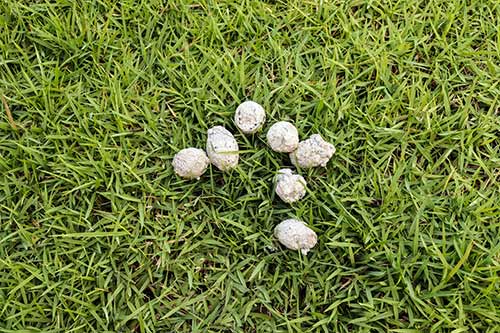
How can I find out what these white spots are?
“Sometimes, owners email me pictures of their dog’s poop with white spots, or they bring a sample to my clinic for me to evaluate visually. Depending on the situation, this could be enough for me to identify the issue. However, in some cases, further testing is necessary: we may need to examine the dog and analyze the stool to determine the cause of the white spots.”
A change in your dog’s stool is something worth discussing with your vet. As mentioned, you can email your vet a photo or pop in with a stool sample, so they can determine what is going on. Speaking as a vet, we won’t be put off by this; it’s just a normal part of our day!
As an owner, a quick visual examination of the stool that has been passed is always a good idea. Moving white strands are usually live worms, while other white specks would not move.
FAQ
What other symptoms should I keep an eye on, if my dog has white spots in their poop?
As white spots can indicate parasites, keep a close eye out for signs such as itchy skin, diarrhea, bloating or a dull coat.
Double check your dog’s diet; are they being fed appropriately and is it possible they have too much calcium in their diet?
If you’re concerned your dog has eaten a foreign object, contact your vet. Blockages can cause symptoms including bloating, lethargy, food refusal and persistent vomiting.
What does unhealthy poop look like in dogs?
An unhealthy poop may be too hard, too soft, an abnormal color or very foul smelling. It can also contain fresh red blood or mucus.
Other references:
Fecal scoring chart
Disclaimer: This website's content is not a substitute for veterinary care. Always consult with your veterinarian for healthcare decisions. Read More.



these are little white balls in my female dogs pea. they are hard. Smaller then a bebe and sometimes there has been 4 or more. She doesn’t seem to be in pain. This started about 2 months ago. We had a very hard battle with fleas this season and It started after that… I wonder if its the flea medicine causing it. have you any idea
Hey there and thanks so much for your question.
I am sorry to hear about this issue.
My first thought would be small bladder stones that are being passed. Other considerations would include mucus plugs or pus, perhaps associated with an infection.
I’d go ahead and get her urine analysed and would also consider a bladder scan, if there is a suspicion for stones.
Treatment will depend on what is going on and could include e.g. a prescribed diet, urinary supplements and/or antibiotics. For certain stone types, if large, they may need surgical removal.
Keep and eye on her, to ensure she is able to pass urine. If she has got stones, there is a small risk of them causing a blockage, and if this were to happen, it would be an immediate emergency.
“The information on this website is not a substitute for in-person veterinary care. Always seek advice from your veterinarian if you have concerns about your pet’s medical condition.”